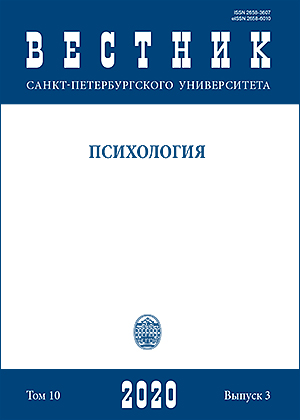Suicidal tendencies among tattooed people
DOI:
https://doi.org/10.21638/spbu16.2020.309Abstract
A number of studies suggest a higher prevalence of suicidal behaviour among body modified individuals compared to the general population. In order to study tattoo features correlated to suicidal behaviour, 184 tattooed individuals aged from 18 to 32 were split into three groups: “ideators” (n = 28), “attempters” (n = 55) and “no suicidal tendencies” (n = 101). The participants were allocated to groups based on their personal history of suicidal attempts and self-injurious behaviour and current suicidal ideation. The history of suicidal and self-injurious behaviour and tattoo features were assessed with a non-standardized self-report questionnaire. Actual suicidal ideation was assessed using Beck’s Hopelessness Scale and Holden’s Psychache Scale. Selfconcept as a possible mediator was assessed using the “Self-concept questionnaire” (V. V. Stolin, S. R. Pantileev). The data was processed with multinomial and logistic nominative regression. The results suppose that having a tattoo on body areas where tattooing is especially painful and having a tattoo depicting only words are associated to having committed a non-lethal suicidal attempt, with the latter fully mediated by its association to systematic self-injury. Results also suggest that there is no association between (a) suicidal behaviour or self-concept and (b) an aggressive tattoo plot, visibility, or number of tattoos. The results can be used as a component of a comprehensive suicidal risk assessment model or in clinical assessment of suicidal risk.
Keywords:
suicidal behaviour, body modification, tattoo, self-concept
Downloads
References
References
Self-injury Behavior in Adolescents? Psychiatry Investigation, 2019, no. 16 (7), pp. 504–512. https://doi.org/10.30773/pi.2019.03.06.
Preliminary Validation of a Scale of Psychache. Canadian Journal of Behavioral Science, 2001, vol. 33, pp. 224–232. https://doi. org/10.1037/h0087144.
Downloads
Published
How to Cite
Issue
Section
License
Articles of "Vestnik of Saint Petersburg University. Psychology" are open access distributed under the terms of the License Agreement with Saint Petersburg State University, which permits to the authors unrestricted distribution and self-archiving free of charge.




